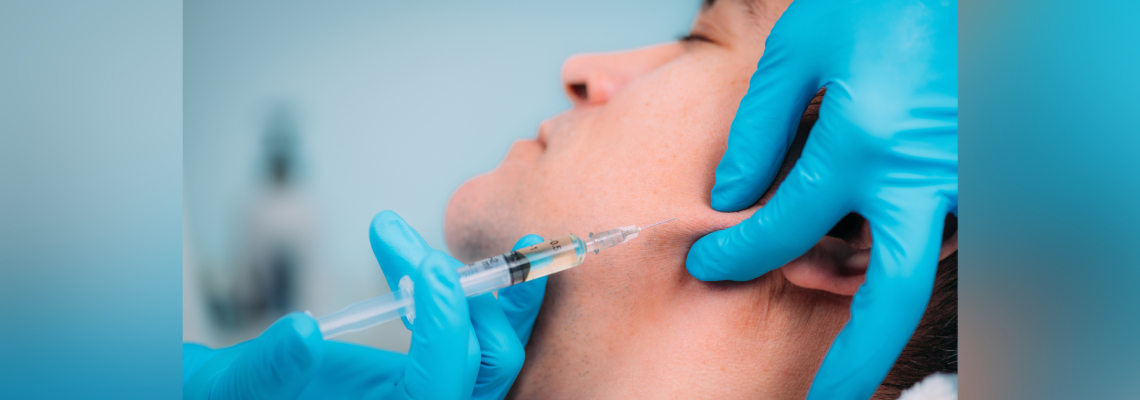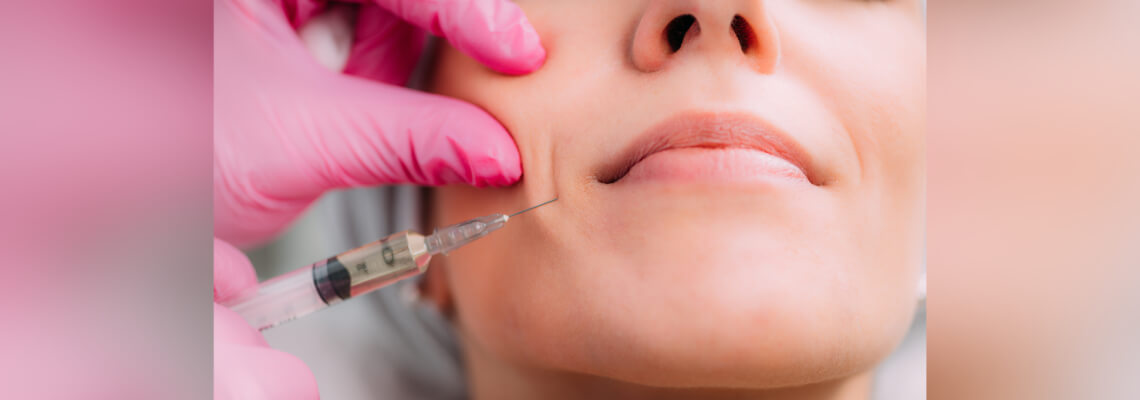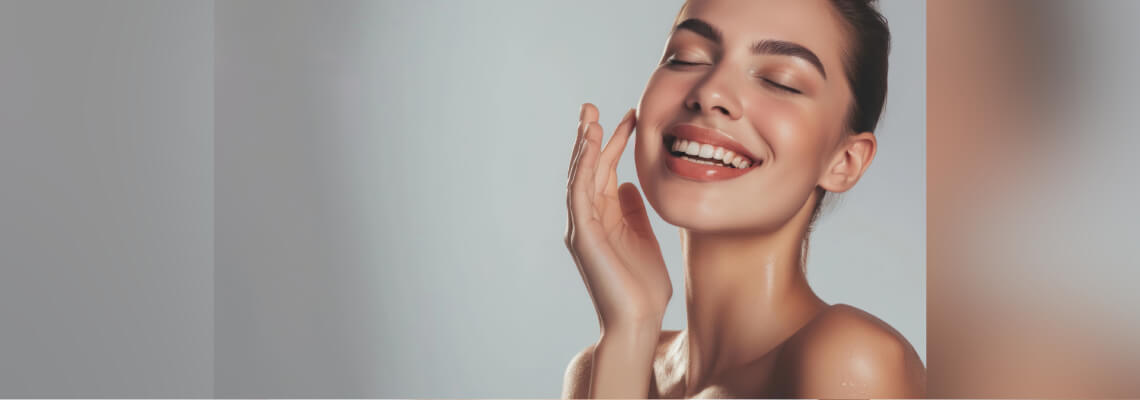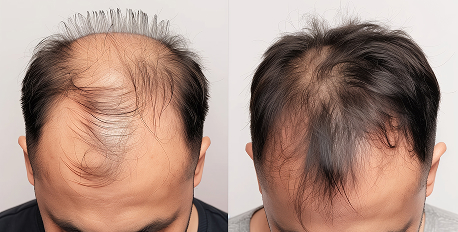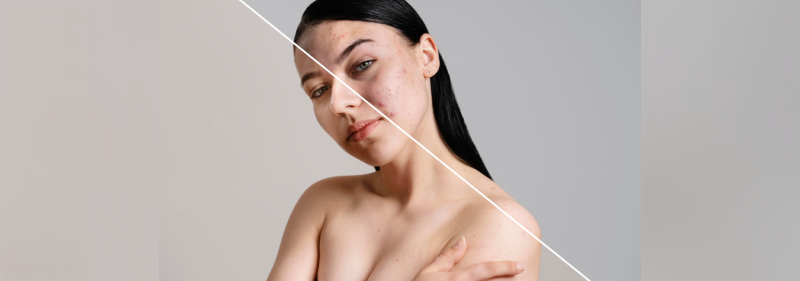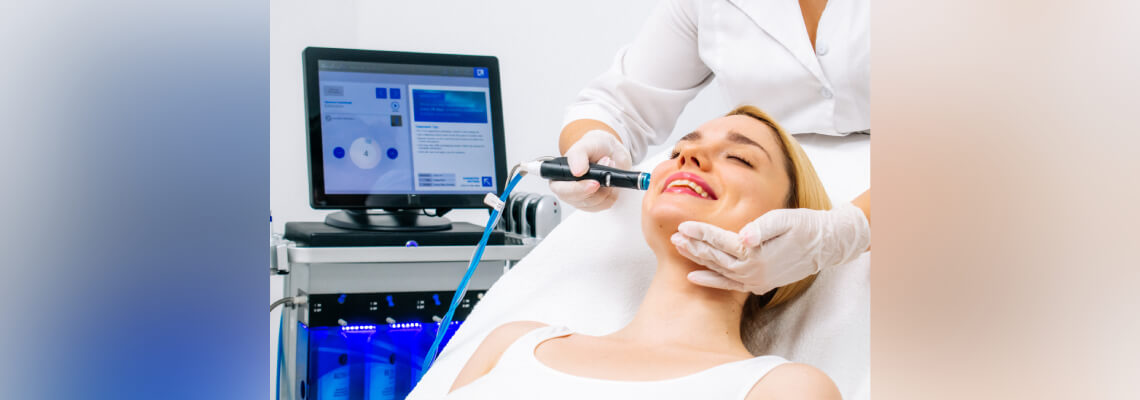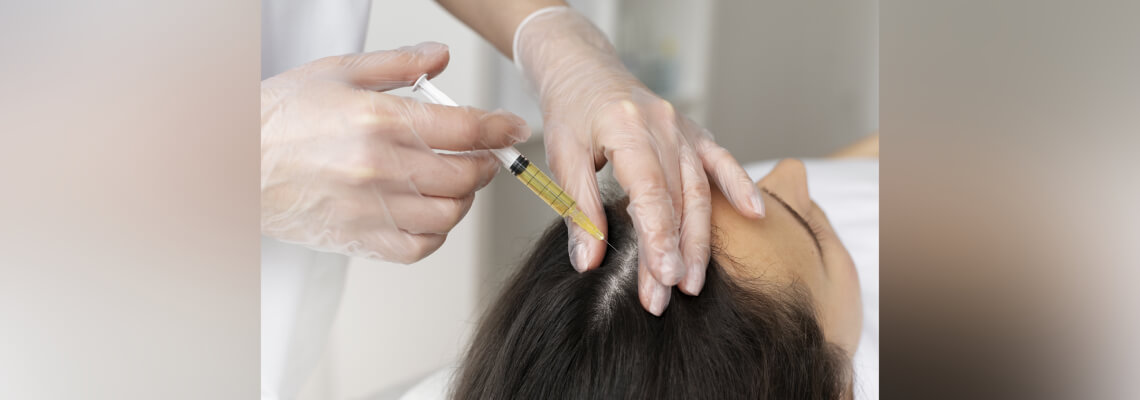Jawline Contouring with Fillers: A Non-Surgical Transformation
In the world of modern aesthetic medicine, jawline contouring with dermal fillers has become a leading choice for individuals seeking a sharper, more sculpted facial profile, without going under the knife. This blog explores how the procedure works, who it benefits, and why it has gained immense popularity as a safe and effective alternative to surgery, supported by recent clinical research.
What Is Jawline Contouring with Fillers?
Jawline contouring is a non-surgical cosmetic procedure designed to reshape and enhance the lower face, specifically the jawline and chin. The goal is to create a sharper, more defined appearance while improving facial balance and youthful proportions. This treatment is ideal for addressing concerns such as a weak chin, early jowl formation, or loss of jawline definition due to aging or genetics.
What Are Dermal Fillers?
Dermal fillers are gel-like injectable substances placed beneath the skin to restore volume, improve structure, and smooth out contours. Two primary types are commonly used for jawline contouring. Hyaluronic Acid (HA) fillers are composed of a naturally occurring substance found in the skin, known for its ability to retain moisture and integrate smoothly with surrounding soft tissue. One of the key advantages of HA fillers is their reversibility; if adjustments are needed, an enzyme called hyaluronidase can dissolve the filler safely and effectively. Calcium Hydroxylapatite (CaHA) fillers, on the other hand, are mineral-based and provide both immediate volumizing effects and longer-term benefits by stimulating collagen production. This dual action helps improve skin firmness and quality over time, making CaHA an excellent option for patients seeking structural enhancement with added skin-rejuvenating effects.
Clinical Evidence Supporting Efficacy
A retrospective case series evaluated HA fillers for non-surgical jawline reshaping in patients aged 42–71. Results showed significant improvement in facial contouring with no major complications, and follow-up periods ranged from three months to two years. The study highlighted how filler type and injection depth were customized for optimal outcomes.
Why Choose Fillers Over Surgery?
Minimal Downtime
Unlike surgical procedures such as implants or liposuction, jawline filler treatments involve little to no recovery period. Most patients can return to work or social activities on the same day, with only mild swelling or tenderness that resolves within a few days.
Customizability
Dermal fillers allow for highly precise adjustments, enabling practitioners to gradually build volume and refine the jawline to match the patient’s aesthetic goals. This level of control makes it easier to achieve natural-looking results tailored to individual facial anatomy.
Reversibility (Hyaluronic Acid Fillers Only)
One of the biggest advantages of hyaluronic acid (HA) fillers is that they can be dissolved using an enzyme called hyaluronidase. This means results are not permanent and can be adjusted or reversed if necessary, offering peace of mind for patients new to facial enhancement.
Lower Risk Profile
Because no incisions, sutures, or general anesthesia are required, filler treatments carry a significantly lower risk of complications compared to surgical alternatives. Side effects are generally mild and temporary, such as swelling or bruising at injection sites.
Advanced Technique: The Contouring Plus Approach
A modern technique known as the Contouring Plus approach combines HA and calcium hydroxylapatite (CaHA) fillers strategically. HA is used for projection and volumization, while CaHA stimulates collagen production for skin tightening and long-term contour improvement. A clinical study highlights that this method delivers both immediate aesthetic results and progressive enhancement over several months.
Who Is a Good Candidate?
Ideal Patient Profile
Jawline filler treatments are ideal for individuals who wish to enhance facial definition without resorting to invasive surgical procedures. This non-surgical approach appeals to those who want a sharper, more sculpted jawline that improves overall facial harmony. It is particularly beneficial for people experiencing mild drooping or volume loss in the lower face, as the added structure helps restore youthful contours. Additionally, patients with a weak chin or noticeable asymmetry often seek jawline fillers to improve chin projection and achieve a more balanced profile.
Health and Expectation Considerations
Ideal candidates should be in good overall health, free from active skin infections, and have realistic expectations about what fillers can achieve. While fillers can significantly improve contour and definition, they cannot correct severe sagging or replace surgical lifting procedures in more advanced cases of skin laxity.
Clinical Evidence of Effectiveness
A prospective 12-month case series (2025) published demonstrated that hyaluronic acid (HA) fillers substantially improved midface volume, chin projection, and jawline contour. Results were maintained for up to a year, with no significant adverse events reported, reinforcing the safety and efficacy of this treatment for suitable candidates.
Results & Longevity
Immediate Results
Patients typically notice improved jawline definition immediately after treatment. The procedure provides instant contouring as the filler adds volume and structure beneath the skin.
Post-Treatment Effects
Mild swelling, tenderness, or bruising may occur at injection sites but usually resolves within a few days. Most patients return to daily activities immediately, making it one of the least disruptive cosmetic enhancements.
Longevity of Results
The duration of results depends on factors such as filler type, injection technique, and individual metabolism. A randomized, evaluator-blinded clinical trial on the hyaluronic acid filler VYC-25L (commonly referred to as “Volux-like”) demonstrated significant improvement in jawline definition at 6 months post-treatment compared to control, high patient satisfaction and sustained aesthetic benefits for up to 12 months.
Risks & Complications
Common Side Effects
Jawline filler treatments are generally safe, but mild and temporary side effects may occur. These include swelling, tenderness, bruising, and small lumps at the injection sites. Such reactions typically resolve within a few days and are often minimized through proper technique and aftercare.
Rare but Serious Complications
Although uncommon, more severe complications can occur. Vascular occlusion—where filler is inadvertently injected into a blood vessel—can lead to skin necrosis or, in extremely rare cases, blindness. Infections may result from the use of unregulated products or poor injection practices. Additionally, some patients may experience immune or granulomatous reactions, where inflammatory nodules form around the filler material.
Where to Find Trusted Providers
If you are considering jawline contouring with fillers, choosing the right injector is crucial for achieving safe, natural-looking results. To make your search easier, explore the DigiMEDSPA Directory Listing, a trusted platform that connects patients with top-rated medical spas and experienced aesthetic professionals. DigiMEDSPA helps you find a provider who meets the highest standards of care, so begin your journey to a more defined, youthful profile by discovering reputable Med SPAs near you today.

